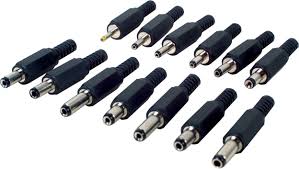
Senior consultant Hugh Massam escaped from the energy sector after serving a 15-year sentence. Here he offers some thoughts post-IBC.
‘There is nought so powerful as a good idea whose time has come’. The question is, do you see the great ideas and disruptors that your competitors see?
When we’re busy developing products, jumping into new markets and maybe sitting in meetings about dense tech or legal issues, it can be all too easy to miss a competitor that’s about to eat your lunch. It was clear to me from three days at IBC that some spaces – such as middleware – are ponds filled with hungry competitors. The ones that spot a seismic shift first – or even make it happen – will be the survivors.
Netflix has been creating such a shift giving sleepless nights to many TV executives. Reliable live streaming over the Internet will probably be even more of a disruptor, and the content delivery suppliers at IBC are promising it for very soon, certainly less than five years, maybe as little as two.
At Wolfpack we are often asked to benchmark clients’ brands, and even this simple exercise can provide startling insights and opportunities pointing out gaps in the market or areas where completion is already fierce. From there we partner with them as marketeers and industry insiders, to help position products and promote them, avoiding the many sand-traps that can befall al product along the way. But what we also do is maintain an outside perspective and look for the real seismic shifts or threats.
Asleep at the wheel? …a story from the energy sector
Looking wider than IBC, the supply of electricity is a former state function and in terms of NPD, was asleep for decades. In some markets both are still true. Even applying basic marketing to it is fairly new and the marketing sophistication of some former state-owned behemoths in this space is still decades behind a sector like broadcast. And let’s face it, not many marketers are hogtied by the need to keep supplying product to a customers with an astronomical cost-to-serve (a wire to a farmhouse in the Outer Hebrides, for example) or to people who patently can’t pay (in practice most energy companies rarely cut people off). Both happen with electricity.
But in the wider energy sector there is innovation, and it bleeds right into people’s home networks. Besides the obvious shift to local and renewable generation, there’s seismic action in storing power, and in supplying it to your laptop. For example, innovators like Moixa.
A conversation in the energy-supply space is likely to take a bunch of things for granted: Houses need to run off the mains; home electricity networks use standard 110 or 220 volt sockets; solar panels are great but they are best used through an inverter (solar panels generate DC, an inverter converts this to AC) and supplying AC in real-time to the building they are on or to the grid; once the sun goes down solar power is not relevant to evenings - the peak time of use – because batteries are too expensive. These are all fundamental assumptions about the market which players like Moixa are challenging.
Small solar phone chargers are old news. So why can’t a home’s solar panels - already generating DC - directly power small DC devices like phones, laptops and lights through a local network? Why can’t you charge a battery from your solar panels in the day, or from the grid at 1am, and store that power to peak-shave by taking demand off the grid in the evening? The grid provider will pay you handsomely to reduce peak-load on demand – ‘demand management’ is a $1.8B market in the UK alone.
The Economist last year spotted that emerging standards which will soon boost a USB cable’s power-carrying capabilities up to 100V (from the current 10) will change the game too.
Players like Moixa saw the obvious – an explosion in low-power DC devices in the home, and a rise in the number of solar panels producing DC on roofs. They are working hard on dull details like DC voltages and plugs, which have never been standardised.
And at the big end – many people still assume electricity plants are large, should be available 24/7/365, and need to be built permanently near their fuel supply, but players like Karadeniz Energy and Agrekko are making massive inroads (and profits) supplying floating power plants and rented power generators. And the largest market for the latter may surprise you – the Middle East, not Africa.
So even in a slow-moving market like electricity generation, disruptors are there. The real question is – how often are you checking on the top three potential disruptors in your market?
Hugh Massam is a Senior Consultant with Wolfpack and also the Principal Consultant at E Equals Limited, an energy communications agency based in Cambridge, UK. @eequalsuk.

You must log in to post a comment.